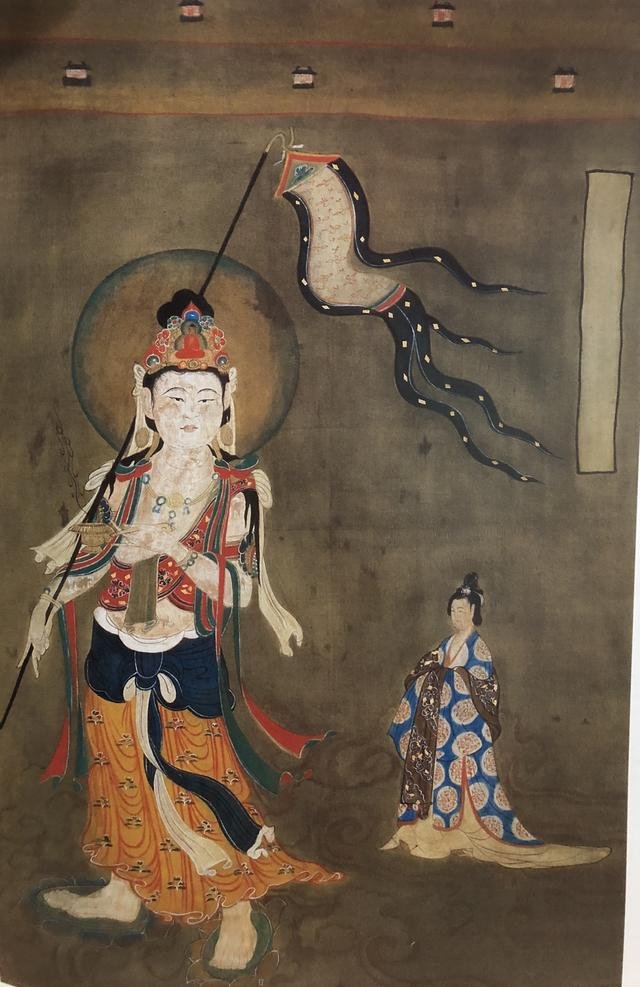为接往生者前往西方净土的引路菩萨,在敦煌藏经洞出土多幅·表现型态亦大致相罔幅引路苦随左手轨长柄香炉,炉上香烟氤氲:右手握长柄杆,顶端有的聚调幅,角造型和幡身上的幡手丶幡脚·与今莫高窟所岀土的绢幡造型相。菩萨面丶眼丶与唇的匀勒方式充满女性温柔的气质,足踏莲花乘云而行,以幡招引身后的亡者比幅亡者为一贵妇,面容小巧而精致,身着华丽团花的宽袖长袍兴披巾,双手合袖跟随引路前行,充满沉静恬美的气质上方规律的横线中整齐交错穿插着建筑物·为菩随引亡者前往的净土。关于净土的表现·此法藏引路菩萨图中·将建筑物锢于雾掩映中,是较自然的呈现方式,此图则路具装饰性、而非意义性。
Many portraits of the Soul-guiding Bodhisattva, who leads the deceased to the Western Pure Land were unearthed in the sutra cave in Dunhuang. The styles are more or less the sameThis one holds a long-handled incense burner from which smoke rises in his left hand. His right hand carries a long pole with a hook at the end to which a long banner is attached. The triangular portion at the head and the streamers extending from the main body are similar to the banners unearthed in the Mogao Grottoes. The roundedness of the face of the Bodhisattva and the lines of the brows, eyes and lips display a tender feminine quality. With the feet on lotuses, the Bodhisattva rides a cloud and guides the following deceased with the banner. The deceased appears to be an elite lady with delicate features, wearing a luxuriant long robe with loose sleeves and circular floral patterns and a shawl. Peacefully she follows the Bodhisattva with hands in prayer inside her The buildings amidst the regular lines at the top symbolize the Pure Land where the Bodhisattva is taking the deceased. Among the Buddhist treasures , the buildings, half-hidden behind clouds in the Soul-guiding Bodhisattva are a more natural presentation. In this one they are slightly decorative. (The original is in the collection of the British Museum.

Congratulations @bibliophile! You received a personal award!
Click here to view your Board